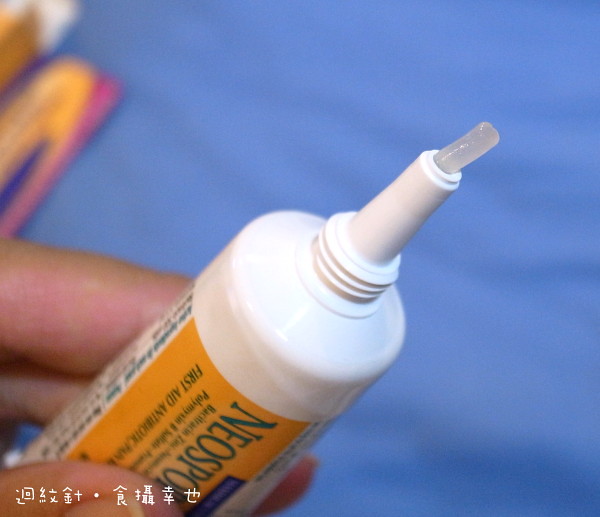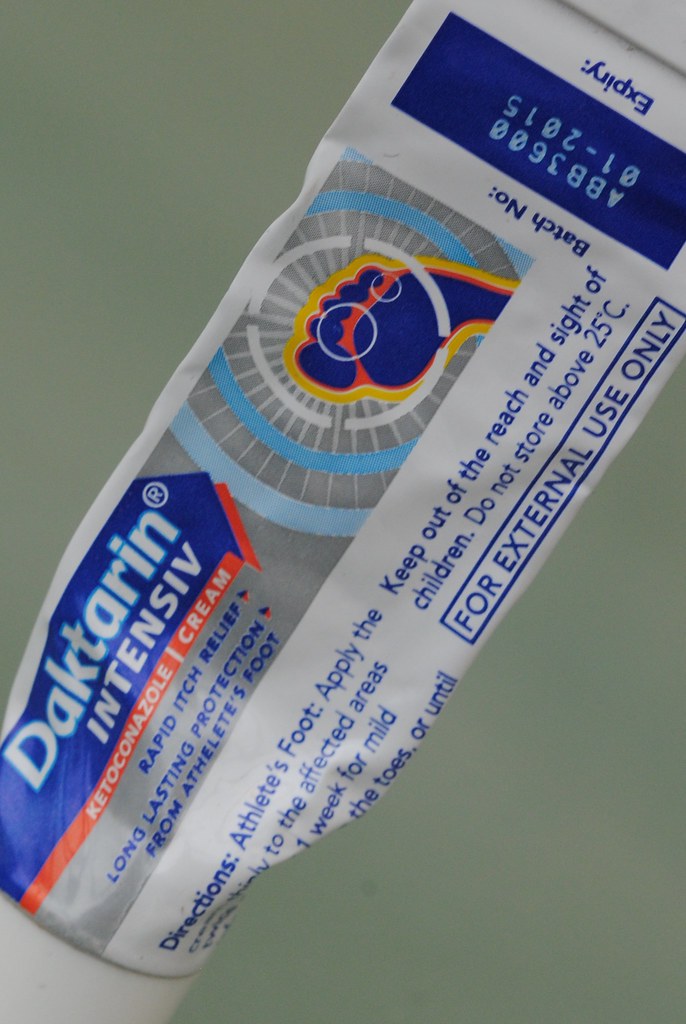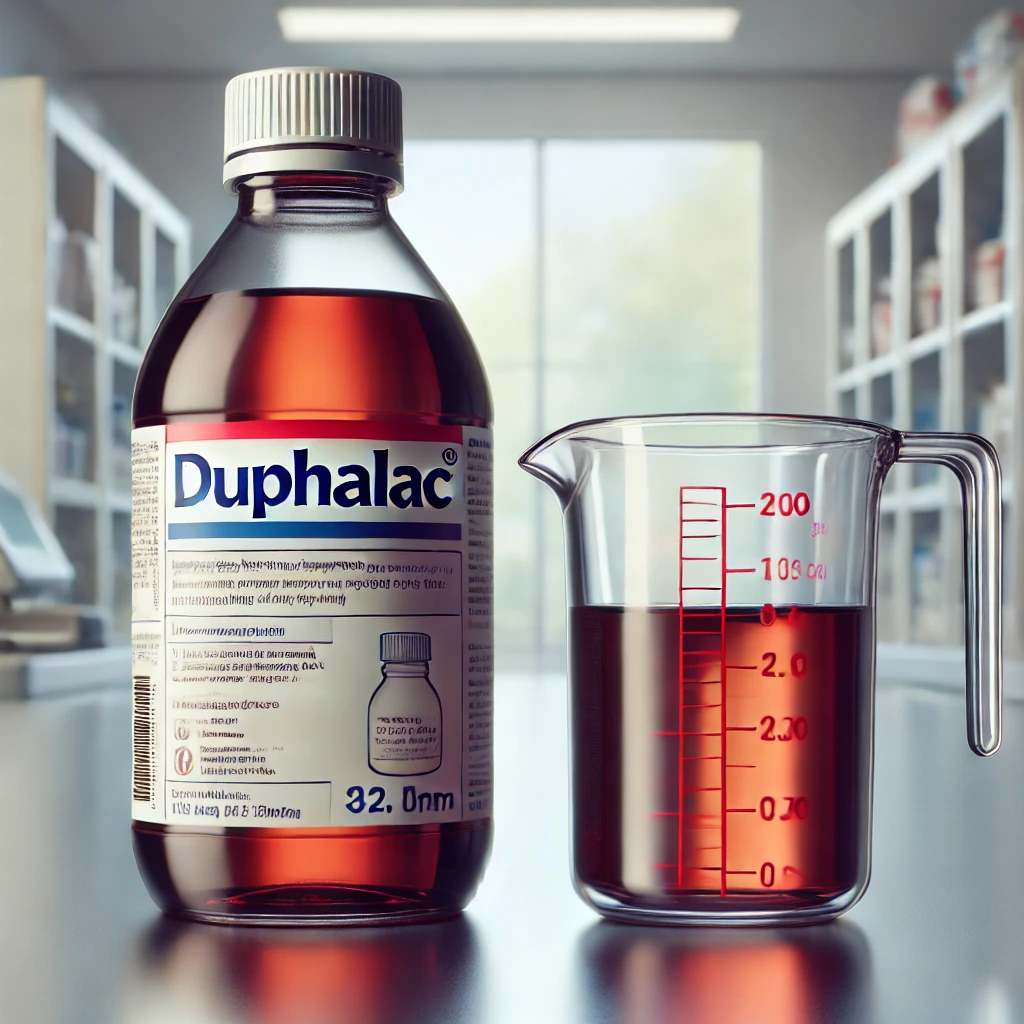Table of Contents
What Exactly is Ketoconazole Cream?
Ketoconazole Cream is a widely used, dermatologist-recommended antifungal medication designed to treat stubborn fungal infections of the skin. Available in a convenient topical form, it directly targets the root of the infection without needing oral medication. Most commonly available in a 2% strength, Ketoconazole Cream is powerful enough to fight off fungi effectively—yet gentle enough for daily use on affected areas. Whether you’re dealing with athlete’s foot, ringworm, jock itch, or yeast-related skin issues, this medicated cream offers fast relief and helps prevent recurrence with consistent use.
What Can This Cream Treat?
Ketoconazole Cream is a powerhouse when it comes to treating a variety of stubborn skin infections. Its antifungal properties make it highly effective against several common issues, including:
- Athlete’s Foot – That itchy, cracked, and peeling skin between the toes caused by fungal overgrowth.
- Jock Itch – A red, irritated rash in the groin area that’s uncomfortable and often hard to treat.
- Ringworm – A contagious fungal infection that appears as a circular rash (despite the name, there are no actual worms!).
- Yeast Infections of the Skin – Often seen as red, sore patches in moist areas like underarms or folds of skin.
- Seborrheic Dermatitis – A chronic condition that causes dandruff-like flakes, especially on the scalp, face, or chest.
Whether your fungal issue is mild or persistent, Ketoconazole Cream provides targeted relief where you need it most.
How to Use It for Best Results
Applying Ketoconazole Cream the right way ensures faster healing and prevents the infection from coming back. Follow these simple steps:
- Clean the Area First
Gently wash the affected skin with mild soap and lukewarm water. Pat the area dry with a clean towel—don’t rub. - Apply the Cream Carefully
Use just a thin layer of cream—enough to cover the infected spot and a small margin around it. - Massage Gently
Rub the cream in until it’s fully absorbed into the skin. - Stay Consistent
Apply as directed, usually once or twice a day, depending on your doctor’s instructions or the product label.
Pro Tip: Even if the rash looks better, continue using Ketoconazole Cream for about a week after symptoms disappear. This ensures the fungus is fully eliminated and reduces the chances of it coming back.ut a week after symptoms clear to prevent the infection from coming back.

What to Expect When Using Ketoconazole Cream
When you start applying Ketoconazole Cream, don’t expect overnight magic—but you’ll likely notice a steady improvement if you stay consistent. Here’s a general timeline of what most people experience:
- First Few Days: Itching, redness, and irritation usually begin to calm down as the antifungal action kicks in.
- After 1 Week: The rash often starts shrinking, and flaking or dryness should visibly reduce.
- Full Results: With regular use, most fungal infections clear up within 2 to 4 weeks. In cases of seborrheic dermatitis or stubborn infections, you might need longer treatment, as advised by your doctor.
Important Safety Information
Ketoconazole Cream is considered safe for most users, but a few precautions can help you use it correctly and avoid side effects:
- Store it at room temperature – Keep it away from extreme heat or cold.
- Wash your hands after use – Unless you’re treating your hands, always clean up after applying.
- Avoid contact with eyes, nose, or mouth – It’s for external skin use only.
- Pregnant or breastfeeding? – Always consult your healthcare provider before using it on large areas or for extended periods.
While side effects are rare, some people may experience mild burning, dryness, or irritation at the site of application. If that happens, stop use and check with a healthcare professional.
Where to Get Ketoconazole Cream – And How Much It Costs
You can easily buy Ketoconazole Cream in most places—either over the counter or with a prescription:
- Over-the-Counter (OTC): Weaker formulations (usually below 2%) for mild cases.
- Prescription Strength: The 2% cream, commonly prescribed for tougher or recurring infections.
- Available at: Local pharmacies, major drugstore chains, and trusted online retailers.
💰 Cost Range: Typically between $10 to $40 internationally, depending on brand, strength, and tube size. The good news? A single tube often lasts 4 to 8 weeks, even with daily use.
Answers to Common Questions
Does Ketoconazole Cream burn when applied?
For most users, Ketoconazole Cream goes on smoothly with no discomfort. However, some people may experience mild tingling or a slight burning sensation, especially during the first few uses. This usually fades quickly and is not a cause for concern unless irritation worsens.
Can I use it with other skin products or creams?
Yes, but timing matters. If you’re using other medicated or moisturizing creams, wait at least 30 minutes between applications. This allows Ketoconazole Cream to fully absorb into the skin and prevents interactions that might reduce its effectiveness.
What happens if I miss a dose?
If you forget to apply a dose, use it as soon as you remember—unless it’s close to the time for your next scheduled application. In that case, skip the missed dose and resume your normal routine. Don’t double up to make up for it.
Is Ketoconazole Cream safe for children?
Yes, Ketoconazole Cream is generally safe for children, but always consult your pediatrician before using it on kids. The skin of younger children is more sensitive, so proper guidance ensures safe and effective treatment.

Why This Cream Stands Out
- When it comes to fighting stubborn skin infections, Ketoconazole Cream isn’t just another antifungal—it’s a trusted solution recommended by doctors for a reason. Here’s why it continues to be a go-to treatment:
- Targets Multiple Fungal Infections
- Whether it’s athlete’s foot, ringworm, jock itch, yeast-related rashes, or seborrheic dermatitis, Ketoconazole Cream is designed to tackle a wide range of common fungal issues effectively.
- Simple, Mess-Free Application
- This cream glides on easily, absorbs well into the skin, and doesn’t leave behind any greasy residue. You can apply it and go about your day—no hassle.
- Won’t Stain Your Clothes or Bedding
- Unlike some oily ointments, Ketoconazole Cream dries clear and clean. No sticky feel, no staining worries—just relief where you need it.
- Affordable Generic Options Available
- You don’t need to break the bank for quality treatment. Generic versions of Ketoconazole Cream offer the same active ingredient and effectiveness at a lower price.
- Gentle on Most Skin Types
- Formulated to be non-irritating, it’s suitable for daily use on sensitive skin when applied correctly. Many users find it soothing rather than harsh.
Getting the Most from Your Ketoconazole Cream Treatment
Using Ketoconazole Cream properly can significantly improve how quickly and effectively it clears up fungal infections. Small adjustments in how and where you apply it can make a big difference in your results.
For Skin Folds (Armpits, Under the Breasts, Groin)
These warm, moist areas are breeding grounds for fungal growth, so attention to detail matters:
- Always dry thoroughly before applying the cream. Even slight dampness can reduce effectiveness.
- Apply a very thin layer of Ketoconazole Cream—just enough to cover the skin. Too much can clog pores or cause irritation.
- Let it air-dry completely before putting on clothes to prevent trapping moisture.
- Opt for loose, breathable clothing, especially cotton, to allow airflow and reduce sweat buildup.
For Athlete’s Foot and Other Foot Infections
Fungal infections between the toes can be persistent if not treated carefully:
- Don’t just treat the visibly infected areas—spread the cream between all toes to stop the fungus from spreading.
- Best applied at night, just before bed, when your feet can remain undisturbed for several hours.
- Wear clean, dry cotton socks after applying the cream to help it absorb and keep moisture away.
For Scalp-Related Fungal Conditions (Using the Shampoo Form)
If you’re treating seborrheic dermatitis or fungal dandruff on the scalp with ketoconazole shampoo:
- Part your hair to expose flaky or itchy areas.
- Gently massage the shampoo into the scalp, focusing on affected patches.
- Leave it on for at least 5 minutes before rinsing to allow the active ingredient to work deeply.
- Use it 2–3 times per week as directed by your dermatologist or product label.
Lifestyle Tips to Prevent Reinfection
Applying Ketoconazole Cream is only part of the solution—your daily habits play a big role in preventing fungal infections from coming back. Here are practical lifestyle tips to boost your treatment’s effectiveness and avoid reinfection:
Smart Hygiene Habits
- Keep skin dry at all times – Fungi love moisture, especially in warm areas like the groin, underarms, or between toes. After showers or sweating, dry thoroughly before dressing.
- Change your socks daily – This is crucial if you’re treating athlete’s foot. Opt for moisture-wicking, breathable fabrics.
- Use separate towels – Don’t use the same towel for your whole body. Keep one just for drying infected areas to stop the spread of fungi.
- Disinfect your shoes regularly – Spray the inside with antifungal shoe powder or use UV sanitizers if available.
- Wash your bedsheets often – During your treatment with Ketoconazole Cream, wash bedding in hot water at least twice a week to remove fungal spores.
Special Situations
For Athletes and Gym-Goers
- Apply the cream after showering, especially in communal areas like gyms or locker rooms.
- Never share personal items like towels, socks, or athletic gear that comes into contact with infected skin.
- Use antifungal powder preventively in your shoes or on your feet during sweaty activities or training.
For Older Adults
- Inspect skin folds regularly, especially under the breasts, around the groin, and underarms, where fungal infections are more common.
- Expect longer treatment durations — Some infections may require 4–6 weeks of consistent use of Ketoconazole Cream.
- Ask for assistance in applying the cream to hard-to-reach areas like the back or under the feet to ensure proper coverage.
For People with Diabetes
- Pay extra attention to foot care — Fungal infections can escalate more quickly in diabetic patients.
- Apply carefully and monitor daily — Use Ketoconazole Cream consistently and examine your feet for any signs of infection or slow-healing wounds.
- Consult your doctor early if you notice increased redness, swelling, or if an area doesn’t improve after a few days of treatment.
Traveling With Ketoconazole Cream
Going on a trip? Don’t let fungal infections interrupt your plans. Here’s how to travel smart with your Ketoconazole Cream:
Continue treatment regularly, especially if you’re swimming, using shared showers, or staying in humid climates—these environments increase fungal risk.
Keep it in the original tube with the prescription label—this helps avoid issues at airport security.
Pack it in your carry-on or toiletry bag, not in checked luggage (to prevent exposure to extreme temperatures or loss).
Bring enough for your entire trip, plus a little extra in case of delays or extended travel.
Signs Your Treatment is Working
Consistency pays off. When Ketoconazole Cream starts doing its job, you’ll notice gradual but steady improvements:
- Day 3–5: Itching begins to ease
- After 1 week: Redness and irritation fade
- Week 2: Flaking or scaling starts to reduce
- By week 3–4: Skin begins to return to its normal texture and tone
Still no results after 2 weeks? It may be time to speak with your healthcare provider. You might need a different medication or a stronger approach.
Long-Term Maintenance
Certain fungal issues, like recurring athlete’s foot or seborrheic dermatitis, may require ongoing management. Here’s how to stay ahead of them:
- Use Ketoconazole Cream once or twice a week after the initial infection clears
- Maintain good hygiene habits—keep affected areas clean, dry, and ventilated
- Watch for early warning signs—like itching or slight discoloration—and treat them early
Fungal infections are persistent by nature. Long-term prevention is just as important as short-term relief.
Combining Treatments for Stubborn Infections
For persistent fungal infections, coIf your infection is not responding well to Ketoconazole Cream alone, consider combination therapy:
With Oral Antifungals
- Use Ketoconazole Cream alongside antifungal pills prescribed by your doctor
- Apply the cream morning and night, even while on medication
- Continue using the cream for at least one week after finishing oral meds to ensure complete eradication
With Natural Remedies (with doctor approval)
- Diluted tea tree oil can provide an extra antifungal punch
- Apple cider vinegar soaks help balance the skin’s pH (do this before applying the cream)
- Coconut oil can be used in between cream applications to moisturize and soothe irritated skin
Important: Always consult your doctor before combining natural remedies with prescription treatments.
Troubleshooting Common Problems
Not seeing the results you hoped for? Here’s what might be going wrong and how to fix it:
If It’s Not Working
- Recheck the diagnosis – Your skin condition might be eczema or psoriasis, not fungal
- Look at the expiration date – An old tube may have lost potency
- Make sure you’re applying enough – Cover the affected area evenly, but don’t overdo it
- Ask your doctor about strength – Prescription 2% Ketoconazole Cream is more effective than over-the-counter versions
If It Causes Irritation
- Switch to once daily application instead of twice
- Apply a moisturizer 30 minutes after the cream to calm the skin
- Use Ketoconazole shampoo (if treating sensitive areas like the scalp or face)
Pro Tip: The key to success with Ketoconazole Cream is consistency, patience, and knowing when to seek professional advice. Pair it with good hygiene, skin-friendly habits, and timely follow-up care, and you’re well on your way to healthier, clearer skin.

Specialized Application Techniques
Getting the most from Ketoconazole Cream sometimes requires a bit of technique—especially for tricky areas like nails, folds, or facial skin. Here’s how to apply it like a pro:
For Nail Fungus (Onychomycosis)
- File down thickened nails gently to allow deeper penetration.
- Apply Ketoconazole Cream under the nail edge, where fungus thrives.
- Cover with a breathable bandage overnight to maximize absorption.
Note: Nail fungus may require extended treatment or an oral antifungal alongside the cream. Consult your doctor.
For Body Folds (Underarms, Groin, Under Breasts)
- Use a hair dryer on a cool setting to fully dry the area before applying cream.
- Apply with a clean cotton pad to avoid transferring bacteria.
- Dust with a light layer of cornstarch afterward to reduce moisture buildup (but avoid talc).
For Facial Use (Seborrheic Dermatitis, Yeast-Related Rashes)
- Apply at bedtime to minimize sun sensitivity.
- Use only a pea-sized amount for the entire face—less is more.
- Avoid the eye area, especially around eyelids and lashes.
Understanding Treatment Timelines
How long does it take to work? Here’s what to expect:
Typical Recovery Durations:
- Mild infections: 1–2 weeks
- Moderate infections: 2–4 weeks
- Severe or recurrent infections: 4–6 weeks (or longer with maintenance treatment)
When Will You Notice Results?
- Itching relief: 2–3 days
- Redness fades: Around days 5–7
- Full clearance: Usually within 2–4 weeks of consistent use
For chronic infections, follow up with a maintenance routine 1–2 times a week to prevent recurrence.
Preventing Future Infections
Treating fungal infections is only half the battle-Ketoconazole Cream works best when combined with prevention. These daily habits make a difference:
Home Hygiene Tips
- Disinfect bathroom floors and shower stalls weekly using antifungal cleaner or diluted bleach
- Wash towels in hot water (at least 140°F/60°C) to kill lingering spores
- Replace loofahs and bath sponges every 3–4 weeks
- Sprinkle antifungal powder inside shoes, especially after workouts
Clothing Recommendations
- Choose moisture-wicking fabrics, particularly for underwear and workout gear
- Change out of sweaty clothes immediately after exercise
- Wash gym wear in hot water, and add a vinegar rinse to neutralize fungal buildup
- Avoid overly tight clothing, which can trap heat and moisture
A fungus-free environment supports lasting results and helps your Ketoconazole Cream work at its full potential.
Frequently Overlooked Application Areas
When treating fungal infections with ketoconazole cream, it’s easy to miss hidden spots where fungi tend to thrive. These neglected areas can allow infections to linger or return:
- Behind the ears – a moist, warm zone where sweat accumulates
- Between the fingers – especially if hands stay damp or gloves are worn often
- Under jewelry – rings, watches, or tight bracelets can trap sweat
- Back of the knees – overlooked during application, yet prone to fungal growth
- Waistband region – tight clothing creates friction and moisture, inviting infection
Travel-Sized Treatment Kit
Don’t let a trip derail your treatment progress. Packing a compact, antifungal care kit ensures your skin stays protected no matter where you go. Include the following:
- Ketoconazole cream in a small, clearly labeled tube
- Antifungal powder to keep feet, shoes, and folds dry
- Disposable cotton pads or swabs for clean, hygienic application
- Mild, pH-balanced cleanser for washing infected areas
- Breathable adhesive bandages to protect sensitive zones on the move
Understanding Different Strengths and Formulations
Not all ketoconazole creams are created equal. Different concentrations and delivery methods can dramatically affect how well your infection responds to treatment.
1. Over-the-Counter (OTC) Strength – 1%
- Ideal for mild or early-stage fungal infections
- Available without a prescription
- Often paired with hydrocortisone for soothing itchy skin
🟢 Best used at the first sign of symptoms, especially in non-severe cases.
2. Prescription Strength – 2%
- Considered the medical gold standard for moderate to severe fungal infections
- Penetrates deeper into the skin
- Often recommended for ringworm, jock itch, or recurring athlete’s foot
🟢 If your infection hasn’t improved with OTC options, consult your doctor for a prescription-strength version.
3. Advanced and Specialty Formulations
- Ketoconazole 2% + Zinc Pyrithione – perfect for flaky scalp and seborrheic dermatitis
- Microencapsulated Ketoconazole – offers a slow-release effect for longer-lasting protection
- Foam-Based Formulations – great for hairy areas like the chest, back, or scalp
Choosing the Right Ketoconazole Cream for You
| Symptom Severity | Recommended Strength | Ideal Formulation |
|---|---|---|
| Mild itching or rash | 1% OTC | Basic cream or lotion |
| Moderate fungal patches | 2% prescription | Medical-grade ketoconazole |
| Scalp or hairy areas | 2% foam | Foam or shampoo-based formula |
| Persistent or recurring | 2% + combo ingredients | Zinc-enhanced or microencapsulated cream |
⚠️ Always read the label and follow your healthcare provider’s advice when choosing or switching formulations.

Explained Application Guide for Specific Conditions
Athlete’s Foot (Tinea Pedis) Treatment Protocol
Preparation:
- Soak your feet in warm water mixed with Epsom salts for 10 minutes to soften skin.
- Gently exfoliate dead skin using a pumice stone.
- Dry feet completely—especially between the toes, where fungi love to hide.
Application:
- Apply ketoconazole cream to the entire foot, not just the visibly affected areas.
- Focus carefully between the toes.
- Use twice daily for the first 2 weeks.
- After initial improvement, reduce to once daily for continued maintenance.
Supportive Care Tips:
- Wear moisture-wicking, breathable socks.
- Alternate between different pairs of shoes daily.
- Sprinkle antifungal foot powder inside footwear to reduce moisture.
Jock Itch (Tinea Cruris) Management
Important Considerations:
- Always apply to clean, completely dry skin after showering.
- Extend application at least 2 inches beyond the rash to cover fungal spread.
- Choose loose-fitting, cotton underwear to avoid trapping moisture.
- Avoid tight clothing or synthetic fabrics during the healing phase.
Treatment Schedule:
- Weeks 1–2: Apply morning and evening.
- Weeks 3–4: Once daily.
- Prevention (post-treatment): Continue 2–3 times weekly to prevent recurrence.
Advanced Treatment Strategies for Resistant Cases
When standard application isn’t working, consider these advanced methods:
1. Occlusive Dressing Technique
- Apply a thick layer of ketoconazole cream.
- Cover with plastic wrap overnight.
- Enhances absorption, especially for thick or callused skin areas.
2. Pulse Therapy
- Apply cream three times daily for 1 week.
- Rest for 1 week.
- Repeat cycle as needed for stubborn fungal infections.
3. Combination Therapy
- Morning: Apply antifungal powder to stay dry.
- Evening: Use ketoconazole cream on affected skin.
- Weekly: Wash with a medicated antifungal shampoo (especially for scalp or body folds).
Understanding and Managing Side Effects
Common Reactions and Solutions:
| Side Effect | Frequency | Management Approach |
|---|---|---|
| Mild burning | 15-20% of users | Apply less cream; use every other day initially |
| Dryness | 10-15% | Apply fragrance-free moisturizer 1 hour after treatment |
| Redness | 5-10% | Reduce frequency; switch to lower strength |
| Itching | 3-5% | May indicate healing; monitor for improvement |
When to Seek Medical Advice:
- Symptoms worsen after 1 week
- Blisters or oozing develop
- Fever accompanies skin symptoms
- No improvement after 4 weeks of proper use
Special Population Considerations
For Children
- Generally safe for children over age 12
- For younger children, consult a pediatrician
- In diaper areas, apply very sparingly due to increased absorption risk
For Elderly Patients
- May require longer treatment duration (up to 6 weeks)
- Watch for skin thinning with prolonged use
- May need help applying cream to hard-to-reach areas
- Monitor for drug interactions with other prescriptions
For Immunocompromised Individuals
- May need extended treatment (6–8 weeks)
- Oral antifungals may be necessary in combination
- Require close follow-up due to increased risk of reinfection or treatment failure
Environmental Factors Affecting Treatment
Hot & Humid Climates
- Store cream in a cool, dry place
- Apply treatment at night when sweat levels are lower
- Increase hygiene routines (e.g., shower twice a day)
- Use antifungal powder more frequently
Cold & Dry Conditions
- Skin may become overly dry
- Apply a gentle moisturizer after the cream absorbs
- Use gloves or cover exposed skin during cold winds
- Prevent cracking by avoiding harsh soaps
Travel Considerations
- Keep cream in its original labeled tube
- Adjust timing for different time zones
- Pack enough for entire trip + extra supply
- Research pharmacies at your destination in case you run out
Integrating Ketoconazole Cream into Your Skincare Routine
Morning Routine:
- Cleanse with a gentle, pH-balanced face or body wash
- Apply any required prescription creams first
- Apply ketoconazole cream to affected areas
- Wait 15 minutes before applying sunscreen or moisturizers
- Apply makeup afterward if desired
Evening Routine:
- Double cleanse to remove sweat and product buildup
- Apply a slightly thicker layer of ketoconazole cream
- Use healing ointments like coconut oil or petroleum jelly on unaffected areas
- Run a humidifier in dry rooms to support skin barrier repair
Weekly Maintenance Checklist:
- Exfoliate gently to remove dead skin buildup
- Sanitize applicators, brushes, or cotton swabs
- Check expiration dates on creams and powders
- Monitor your skin and update your progress log

Scientific Insights: How Ketoconazole Stands Out
Ketoconazole cream remains one of the most trusted topical antifungals for dermatological use—thanks to its potent composition, broad-spectrum action, and unique molecular benefits. Here’s what makes this medication truly stand out in modern skin therapy.
Comparative Advantages Over Other Antifungals
Ketoconazole isn’t just another antifungal—it delivers several competitive benefits:
- Broad-Spectrum Potency: It effectively targets a wide range of fungal pathogens, including Candida, Trichophyton, and Malassezia species. Unlike single-target antifungals, ketoconazole covers both yeast and dermatophytes, making it suitable for mixed infections.
- Anti-Inflammatory Properties: It reduces inflammation, redness, and irritation associated with fungal skin conditions. These soothing properties make it a dual-action treatment, especially for seborrheic dermatitis and inflamed tinea.
- Lower Resistance Rates: Fungi are less likely to develop resistance to ketoconazole compared to azoles like miconazole or clotrimazole, which means better long-term outcomes with fewer relapses.
- Excellent Penetration with Minimal Irritation: Ketoconazole is lipophilic, meaning it integrates easily into the skin’s lipid layers for deeper penetration—without commonly causing stinging or peeling.
Clinical Performance Data: What Studies Say
Scientific studies and clinical trials further validate the success of ketoconazole cream:
- 87% cure rate for tinea corporis (ringworm) after 4 weeks of consistent application.
- 92% symptom improvement in seborrheic dermatitis cases, including reduced flaking and itching.
- 78% recurrence reduction with long-term preventive use (2–3 times per week after initial clearance).
- High patient satisfaction reported in real-world use due to ease of application and minimal side effects.
These numbers underscore ketoconazole’s standing as a reliable and effective option across various fungal skin conditions.
Molecular Advantages: How Ketoconazole Works at the Skin Level
The structure and behavior of ketoconazole at the molecular level contribute significantly to its effectiveness:
- Lipophilic Nature: Its affinity for fatty tissues helps it integrate easily into the skin barrier, enabling better penetration and longer-lasting action.
- Strong Protein Binding: Ketoconazole binds to keratin in the skin, allowing for a sustained release effect and protection even after washing.
- 72+ Hours of Residual Activity: Once applied, the cream remains active in skin layers for over 3 days, offering continued fungal suppression between doses—ideal for those with busy lifestyles.
Cost-Saving Tips and Alternatives
Maximizing Every Tube
Make your prescription last longer with these simple practices:
- Use a pea-sized amount per application—enough to form a thin layer without wastage.
- Store in a cool, dry place, away from direct sunlight to preserve potency.
- Ask your pharmacist about larger prescription tubes, which are more cost-effective per gram.
- Compare prices between pharmacies and online options using apps or price-checking platforms.
When to Consider Alternatives
Despite its broad action, there are times when ketoconazole might not be the best option:
- No improvement after 4 weeks of consistent use.
- Extensive body involvement that may require systemic antifungals.
- Persistent side effects like burning or irritation despite reduced frequency.
- Budget concerns, especially without insurance coverage.
In such cases, consult your healthcare provider about alternatives like terbinafine, clotrimazole, or oral antifungals.
Affordable Substitutes and Programs
You don’t have to compromise on treatment due to cost:
- Store-brand equivalents often contain the same active ingredient at a lower price.
- Use manufacturer coupons or discount cards, available through official websites.
- Check 340B pharmacies (available at certain hospitals and clinics) for low-income patients.
- Mail-order pharmacies can offer bulk pricing and long-term savings.
Emergency Preparedness with Ketoconazole Cream
Having ketoconazole cream on hand can be a lifesaver during unexpected flare-ups or travel-related exposures.
Home First-Aid Uses
- Treats minor skin infections before they spread.
- Serves as a preventive measure after high-risk exposures (locker rooms, gyms, swimming pools).
- A must-have in travel kits, especially if you’re prone to fungal infections.
- Provides backup treatment for chronic conditions like seborrheic dermatitis or jock itch.
When It’s Not Enough
Recognize red flags that may indicate the need for urgent medical care:
- Worsening rash with fever or chills
- Skin lesions that weep, blister, or produce pus
- Infections involving sensitive areas like the eyes, mouth, or genitals
- No improvement after 4–6 weeks of compliant use
Long-Term Storage Tips
- Always store in the original tube to preserve efficacy.
- Avoid heat or freezing temperatures; optimal range is below 77°F (25°C).
- Discard if you notice color change, separation, or unusual odor.
- Mark and routinely check the expiration date—expired medication may lose potency.
Psychological Aspects of Treatment
Dealing with fungal infections isn’t just about physical symptoms—it affects self-esteem, confidence, and mental health.
Managing Frustration and Treatment Fatigue
- Set realistic expectations—visible results typically take 2–4 weeks.
- Track improvements weekly; even small wins like reduced itching matter.
- Celebrate milestones—completing your first treatment cycle, fewer flare-ups, or clearer skin.
- Consider joining online support forums to share experiences and learn tips.
Building Confidence Through Routine
- Take progress photos every 7–10 days to see how far you’ve come.
- Focus on preventive actions like daily hygiene and clothing choices.
- Stick to a routine; consistency is key to results.
- Learn about your condition to feel empowered, not overwhelmed.
When to Seek Emotional Support
- Feeling embarrassed in public or social settings
- Anxiety over constant recurrence or spreading infection
- Frustration from slow progress despite doing everything “right”
- Skin issues affecting intimacy or relationships
Therapy, support groups, or even a chat with a friend can make a big difference.
The Future of Ketoconazole Treatments
Research and innovation are driving the next wave of antifungal solutions. Ketoconazole is evolving with science to become smarter, more efficient, and easier to use.
Emerging Research
- Nanoparticle delivery systems for targeted penetration
- Combination with probiotics to preserve healthy skin microbiome
- Smart-release formulations for extended protection
- Personalized protocols based on fungal strain or patient skin type
Potential Advances in Development
- Once-a-week applications for maintenance
- Built-in moisture barriers to prevent sweat-induced recurrence
- Color-changing indicators to show proper coverage during application
- App-connected dispensers that monitor usage, send reminders, and record skin progress
Ongoing Clinical Trials
- Extended-release formulations offering multi-day activity
- Pediatric-specific doses and textures for sensitive skin
- Novel combinations with anti-inflammatory or soothing agents
- Preventative cream formulas for those at high risk of reinfection
CONNECT WITH US





